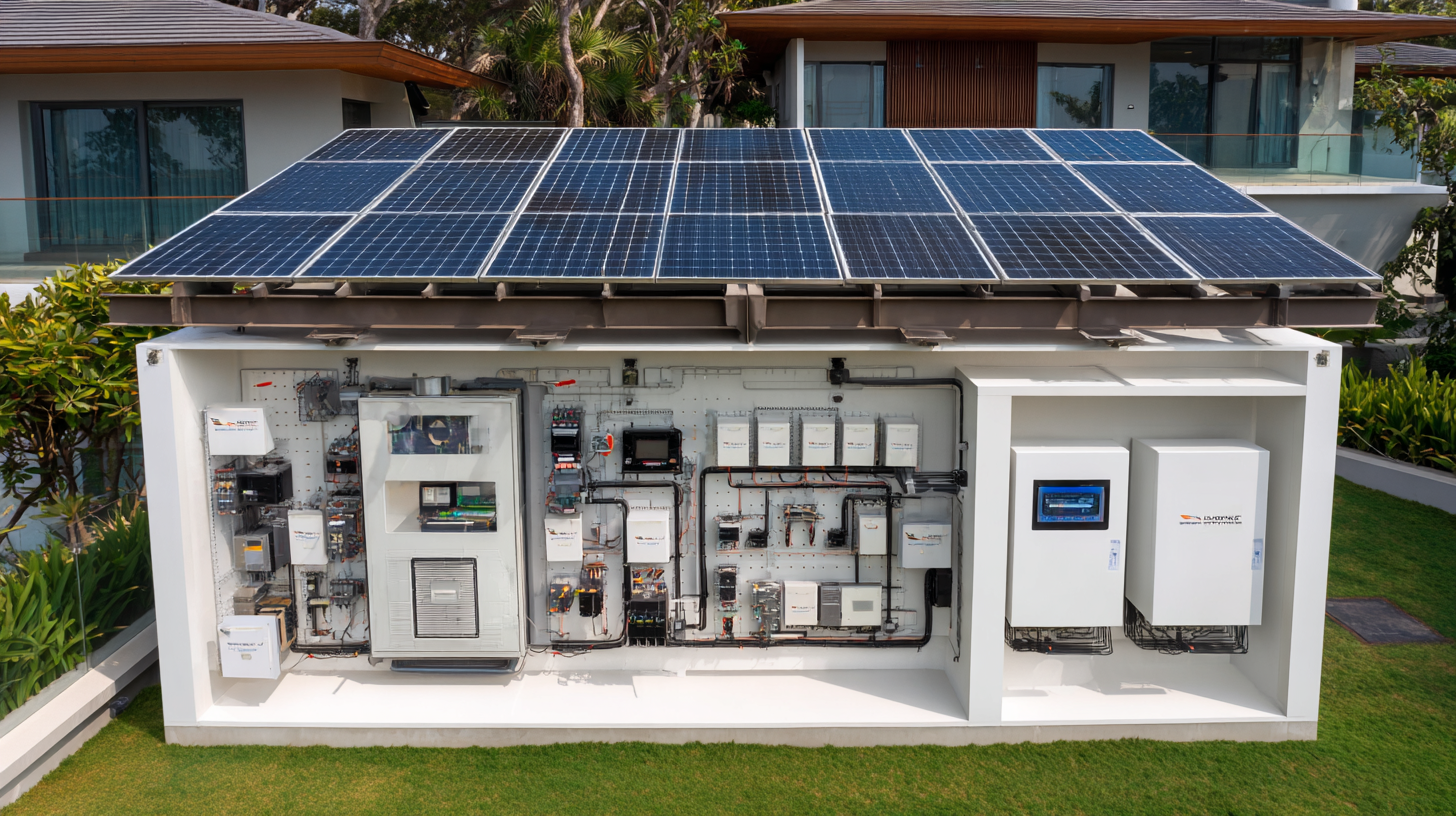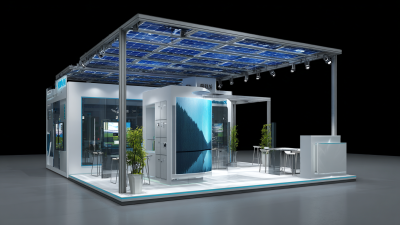MH Energy Your Better Solar and Energy Partner
Leave Your Message
MH Energy Your Better Solar and Energy Partner
As homeowners increasingly seek ways to reduce their energy bills and minimize their environmental impact, innovative Solar Energy Battery Storage solutions have emerged as a game-changer in maximizing home energy efficiency. These cutting-edge technologies not only allow individuals to harness the power of the sun but also provide a reliable means to store excess energy generated during peak sunlight hours for use during times of high demand or when the sun isn’t shining. By integrating Solar Energy Battery Storage into their energy systems, homeowners can enhance their self-sufficiency, reduce dependence on the grid, and take advantage of cleaner energy sources. In this guide, we will explore practical strategies and insights on how to effectively implement these solutions in your home, unlocking significant savings and promoting sustainable living. Discover how you can transform your energy consumption patterns and embrace a more efficient, eco-friendly lifestyle through the power of solar energy and innovative battery storage technology.

As the demand for renewable energy solutions continues to grow, solar energy battery storage technologies are becoming increasingly vital in optimizing home energy efficiency. Community batteries, for instance, function as collective energy banks, harnessing excess energy generated from rooftop solar installations to benefit local households and businesses. This not only alleviates pressure on the grid but also enables homeowners to maximize their energy savings while contributing to the clean energy transition.
Recent studies predict that the demand for lithium-ion battery storage will soar over the next decade, enhancing the penetration of renewable energy sources in our daily lives. These batteries are essential for effective energy management systems, allowing for energy to be stored and used efficiently as needed. Long-duration batteries, particularly, are highlighted as crucial components for creating a cleaner and more reliable energy future, demonstrating the necessity for continuous innovation in energy storage technologies to support sustainability goals. As research emphasizes, exploring various energy storage mechanisms such as thermal energy or even sand batteries can lead to efficiencies over 99%, helping retain energy for extended periods and pushing us toward a more sustainable energy landscape.

When striving to maximize your home energy efficiency, evaluating your energy demand is crucial in selecting the right solar energy battery storage system. Start by analyzing your household's energy consumption patterns. This means tracking daily usage, identifying peak demand times, and understanding seasonal fluctuations. By collecting this data, you can get a clearer picture of how much energy you need your battery to store, ensuring it meets your requirements without overspending on unnecessary capacity.

Once you have a comprehensive understanding of your energy usage, consider the types of appliances and systems that contribute most significantly to your demand. High-energy devices such as air conditioners, heaters, and kitchen appliances should be prioritized, as they will likely require more substantial energy reserves. From here, you can gauge the appropriate battery size that aligns with your solar production capabilities and daily consumption. This informed approach allows homeowners to optimize their solar storage solutions, creating a more sustainable and efficient energy ecosystem.
Solar energy battery storage solutions represent a transformative approach to maximizing home energy efficiency. By capturing and storing excess energy generated during peak sunlight hours, these systems ensure that households can utilize renewable energy even when the sun isn't shining. This level of energy independence not only reduces reliance on the grid but also leads to lower energy bills over time.
However, to fully understand the benefits, it’s essential to analyze the cost efficiency and return on investment (ROI) of solar battery systems.
When evaluating the ROI for solar battery systems, homeowners must consider both the upfront costs and long-term savings. Initial investments can vary significantly based on storage capacity, battery technology, and installation costs. However, many users find that the savings on utility bills, combined with potential government incentives and tax credits, can recover costs in a relatively short period.
Furthermore, with rising energy prices and the increasing availability of flexible financing options, the economic viability of these systems continues to improve. In essence, innovative solar energy battery storage solutions not only enhance energy efficiency but also offer a compelling financial case for homeowners looking to invest in sustainable living.
Integrating smart technology into solar energy battery storage solutions offers homeowners unprecedented control over their energy usage. By leveraging advanced software and devices, users can monitor their energy consumption in real-time, allowing for more efficient consumption patterns. Smart thermostats, energy management systems, and connected appliances can analyze energy data and optimize usage according to peak and off-peak rates, thereby minimizing costs and maximizing efficiency.
Moreover, these technologies support the integration of renewable energy sources into daily life seamlessly. Homeowners can program their smart systems to store excess energy generated during the day and utilize it during high-demand hours or when electricity rates spike. This not only enhances energy independence but also contributes to a more sustainable lifestyle by reducing reliance on traditional energy sources. The confluence of solar energy and smart technology paves the way for innovative energy management, ensuring that homes are both energy-efficient and environmentally friendly.
As more homeowners seek to boost their home's energy efficiency, the allure of solar energy systems becomes undeniable. Not only do they contribute to environmental sustainability, but there are also significant financial incentives available at both state and federal levels. For instance, the Federal Investment Tax Credit (ITC) allows homeowners to deduct 26% of the cost of installing a solar energy system from their federal taxes, a substantial benefit that can significantly reduce upfront costs and enhance overall savings.
Additionally, many states offer their own rebates and incentives, such as California’s Self-Generation Incentive Program (SGIP), which provides cash rebates for eligible energy storage projects. According to a report by the Solar Energy Industries Association (SEIA), the combination of these incentives can lower the overall cost of solar installations by as much as 50%, making it an attractive option for energy-conscious consumers looking to maximize their savings.
**Tip 1:** Research local incentives early in the planning process to ensure you don’t miss out on any opportunities.
**Tip 2:** Consult with a qualified solar provider to navigate the complex landscape of rebates effectively.
**Tip 3:** Keep abreast of changing policies, as state and federal incentives can evolve, affecting your potential long-term savings.
| State | Federal Rebate (%) | State Rebate (%) | Average Cost of Solar System ($) | Savings Over 20 Years ($) |
|---|---|---|---|---|
| California | 26 | 20 | 20,000 | 40,000 |
| Texas | 26 | 10 | 18,000 | 36,000 |
| Florida | 26 | 15 | 19,500 | 38,000 |
| New York | 26 | 25 | 22,000 | 44,000 |
| Illinois | 26 | 10 | 17,500 | 34,000 |






